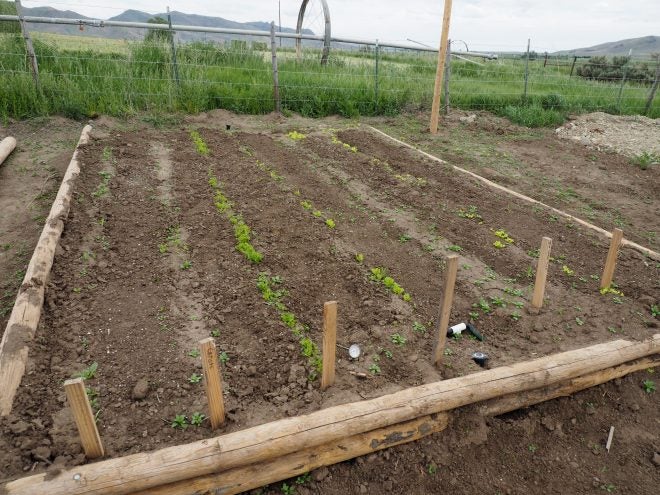Home on the Range #010: Increasing Soil Arability With Plants
RusDs 11.27.20

Welcome back to our recurring series of “Home on the Range.” Here, we would like to share all of our experiences for those who may be homesteading, living off the land, hunting, farming, ranching, and truly investing in nature and the great outdoors. The ability to provide for yourself and your family can be tremendously rewarding and simultaneously difficult at times. So, in “Home on the Range” we want to share our different exploits so you can learn and hopefully we can receive your feedback along the way as well.
Plant Your Soil Healthy
Often times when first embarking on the journey of farming or homesteading, one might encounter soil that, while having decent composition in terms of minerals, is packed too tightly to allow for adequate growth of root vegetables or perennial plants that rely on taproots or crowns. The soil may not be very arable, having experienced too much compaction over time. This can happen for a wide variety of reasons, ranging from naturally clay-like composition to having a hoof pan established from previous overgrazing or poor stock management. Vehicle traffic or poor plowing techniques can also cause this condition. Whatever the reason, remediation of soil arability can be an expensive proposition. This is especially the case when looking at the amount of fuel required for tackling this issue in a larger multi-acre area. There is, however, a relatively inexpensive solution: Sewing various plants that increase soil arability.

Daikonoclast
Other cover crops may do the job on a shallow level, but one of the best cover crops out there for increasing soil aeration as well as improving micronutrients in one’s soil is the Daikon, a large Japanese radish that can grow up to and in some cases over a foot deep into one’s soil. Daikon can be planted from seed, and only need to be planted roughly 1/2″ deep. In about 1.5-2 months, this initial planting will yield deep penetration and aeration of the soil, as well as a nice cover of greens that can be forage for livestock. If you desire to eat the daikon, pick them before the ground has a hard frost. Should one just leave them in the ground overwinter, the roots and greens of the daikon will decompose and improve the soil further. The Daikon root will retain and release the nitrogen content of one’s soil in a much slower manner and further improve the soil in that fashion.
Daikon radish also makes good eating for both human and animals alike. Many types of livestock will enjoy the greens, and daikon has been a staple root vegetable in Japanese cuisine for quite some time. They are less spicy than a red radish and more versatile as a food, in my humble opinion. In addition to being good eating, the daikon can be planted tightly enough together that the cover canopy can shut out noxious, invasive weeds from where you don’t desire them to be.
Planting with daikon is best done in late summer/early fall, depending on the time of incidence of first frost in one’s region. Ideally planting should be accomplished one to one and a half months before first frost if one desires the daikon and its greens to die off after frosting (and further improve one’s soil via decomposition. Though an early spring planting/harvest can be accomplished, it is not a big fan of hot summer temperatures. If improving pasturage, plant loosely regardless of time of year, and mix with your main forage seed. If improving a harvest crop area, plant tightly in the fall so you will have well-prepared soil in the spring for your main crop.
Turnip Your Soil
Another strong candidate for this type of soil care is the turnip. While it may not get things done as deep as the daikon, turnips still can have a robust and wide taproot that requires little to no human intervention in order to break up and get roughly 6″ deep into compacted soils. Like daikon, turnips have the added benefit of being edible for livestock and humans as well. Should one choose to harvest them after they’ve done their job, but before winterkill, they won’t go to waste.
Save Your Back or Save on Gas
In short, a bit of seeding with daikon or turnip can help deal effectively with problem areas on your farm, ranch or garden by breaking up soil compaction. It’s an attractive alternative to tilling by hand or machine, and has additional benefits that tilling alone cannot provide. As always, thanks for reading, and keep checking in with Alloutdoor for more tips like these. If you have ever planted daikon or turnips yourself to help improve soil arability let us know in the Comments below! We always appreciate your feedback.